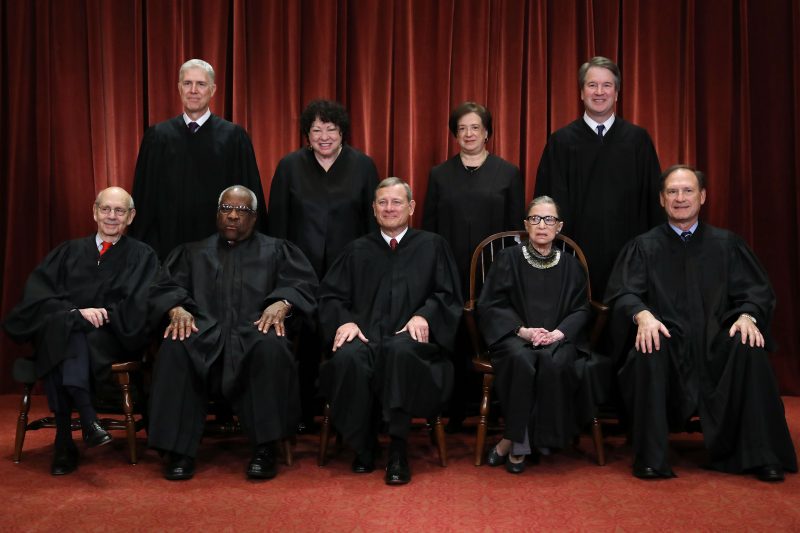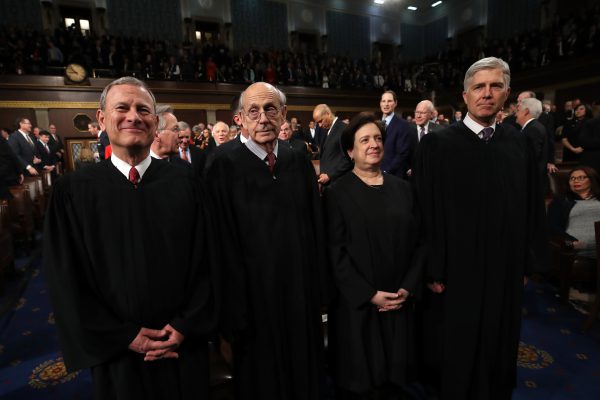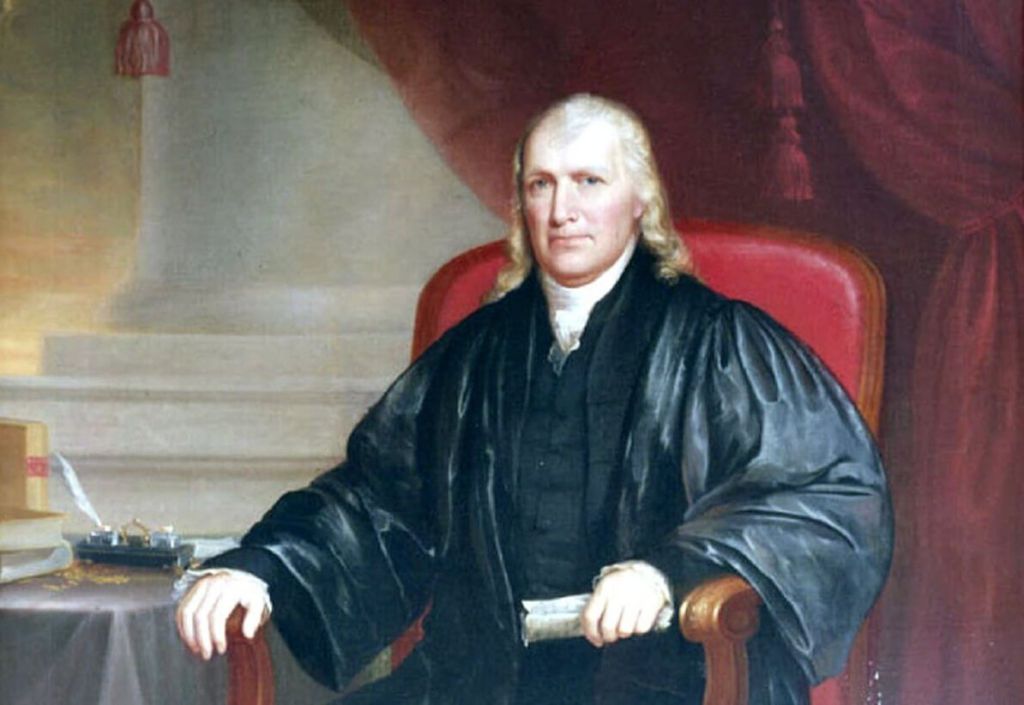
Supreme Court justices are granted lifetime appointments. The idea behind this was to ensure that justices could operate without being influenced by political operations.
The Constitution does include language explaining that justices can be forcibly removed from the bench. It’s a lengthy process similar to the removal of a sitting president.
Here’s what you need to know:
1. The Constitution Requires Federal Judges to Exhibit ‘Good Behavior’

Getty(Front L-R) Associate Justice Stephen Breyer, Associate Justice Clarence Thomas, Chief Justice John Roberts, Associate Justice Ruth Bader Ginsburg, Associate Justice Samuel Alito, Jr., (Back L-R) Associate Justice Neil Gorsuch, Associate Justice Sonia Sotomayor, Associate Justice Elena Kagan and Associate Justice Brett Kavanaugh
The founding fathers established the judicial branch of the federal government in the original Constitution. Article III, Section I states that appointed judges are expected to maintain “good behavior” in order to keep their spot on the bench. But the writers did not explain what sort of behavior would constitute the removal of a judge. The section reads:
The judicial Power of the United States, shall be vested in one supreme Court, and in such inferior Courts as the Congress may from time to time ordain and establish. The Judges, both of the supreme and inferior Courts, shall hold their Offices during good Behavior, and shall, at stated Times, receive for their Services a Compensation which shall not be diminished during their Continuance in Office.
2. Justices Are Categorized Along With the President as Being Subject to Impeachment

Getty(L-R) U.S. Supreme Court Chief Justice John G. Roberts, U.S. Supreme Court Associate Justice Stephen G. Breyer, U.S. Supreme Court Associate Justice Elena Kagan, U.S. Supreme Court Associate Justice Neil M. Gorsuch during the State of the Union address in the chamber of the U.S. House of Representatives January 30, 2018 in Washington, DC.
A president or vice president can only be removed from the White House if they are first impeached by Congress. The same principle applies to Supreme Court justices because they are classified as “civil officers.” The founding fathers got the idea from England and wrote the practice into the Constitution. Article II, Section 4 lays the foundation for impeachment:
The President, Vice President and all civil Officers of the United States, shall be removed from Office on Impeachment for, and Conviction of, Treason, Bribery, or other high Crimes and Misdemeanors.
The Senate lays out the importance of the impeachment process on its website: “Impeachment is a very serious affair. This power of Congress is the ultimate weapon against officials of the federal government, and is a fundamental component of the constitutional system of ‘checks and balances.'”
3. A Simple Majority Vote Is Required in the House of Representatives to Impeach a President or a Justice
The House of Representatives is the only body with the power to begin an impeachment proceeding. Specific allegations of wrongdoing are drafted in articles of impeachment.
The matter is then debated among the House Judiciary Committee, which has 40 members. 21 votes are required to present the issue before the entire House.
The articles of impeachment would then be debated on the House floor before all 435 representatives. Again, a simple majority vote is enough to approve impeachment. The matter would then move on to the Senate.
4. The Senate Has the Ultimate Power to Remove a Sitting President or Supreme Court Justice
If articles of impeachment are approved by a majority in the House of Representatives, the issue moves on to the Senate. The bar is set much higher in this congressional body. Instead of a majority vote, a full two-thirds of senators have to vote “yes” in order to remove a sitting president or Supreme Court justice.
The impeached official then has to appear before the Senate. It works similar to regular trials in the United States. As explained on the Senate website, a “committee of representatives, called ‘managers,’ acts as prosecutors before the Senate.” The Chief Justice of the Supreme Court presides over the proceedings in the case of presidential impeachment.
The Senate acts as the jury. If the impeached official is convicted in the Senate, then they are immediately removed from office. It is also possible for the senators to bar the now-convicted official from ever holding public office again in the future. There is no appeal.
5. No Supreme Court Justice Has Ever Been Removed and Only One Has Been Impeached

U.S. Senate Historical OfficeSupreme Court Justice Samuel Chase
The only Supreme Court justice to be impeached by the House of Representatives was Samuel Chase in 1804. He was accused of allowing his political bias to influence his decision on the high court. The final straw came in 1803 when he chastised a U.S. circuit court in Maryland. He gave a grand jury charge after the court granted universal male suffrage. Chase also condemned the court for repealing the Judiciary Act of 1801.
The House voted to impeach Chase in March of 1804. During his trial before the Senate in 1805, Chase argued that he could only be removed from the bench for an indictable offense, not for judgment errors or behavior. The Senate agreed and he was exonerated.
As for presidents, three have been impeached: Donald Trump, Bill Clinton and Andrew Johnson. Trump was accused of abuse of power. Clinton was charged with perjury and obstruction of justice. Johnson was impeached in 1868, after removing Secretary of War Edwin Stanton from the Cabinet. All three men were acquitted by the Senate.